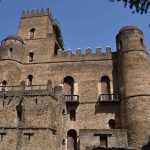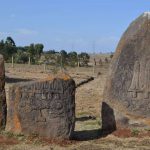Harar is a famous, walled, Muslim City, forbidden “to the French and other infidels.”
Harar rose as a power centre in 1520 when a local amir, Abu Bekr Mahomed moved his capital here from Dakar. The amir was murdered by Ahmed Gragn, or Ahmed the Left-handed, who became his successor. Gragn began a holy war against the Christian Ethiopian Empire, but despite his successes, he was eventually defeated in 1543 with the intervention of the Portuguese. Gragn’s successor, his nephew Emir Nur, in response to the advances of the Oromo into the countryside and the isolation of Harar, built the strong, defensive walls, towers and gates which now surround the city.
The city walls originally had five gates, two more were built by the Ethiopians in 1889, the Gate of the Duke and the Berbera Gate. The Erer Gate was made famous in 1855 by the entry of Sir Richard Burton, a British Officer in the Indian Army, the first non-Muslim to see this town, forbidden “to the French and other infidels”.
Among the many fine buildings here are the palace of Ras Makonnen and the 17th Century Jami Mosque, with its 18th Century minaret, and the tomb of Abu Said Ali, an early Muslim religious leader of Harar, beneath which is said to be a well that can supply the whole city in the event of a seige.
The city also contains the Rimbaud House, a fine, traditional house dating from the period when the French poet Rimbaud lived in Harar.
Social Share
Contact information
Yumo Tours
P.O. Box 5698
Addis Ababa, Ethiopia
++251 11 5518878
++251 11 5513783
++251 11 5513451
info@yumo.net



